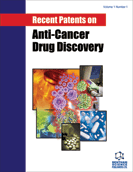
Abstract
Bevacizumab, one of the best-known patents of VEGF inhibitor, has demonstrated significant radiosensitive effects on various preclinical tumor models and clinical trials recently. The radiosensitive effects of this novel patent have achieved satisfactory efficacy through the following mechanisms: normalization of the tumor vasculature, overcoming resistance to radiation, inhibition of repopulation after radiation, and blockade of radiation-induced increased VEGF expression. The combination of bevacizumab with radiotherapy in the treatment of malignant tumors was an inevitable path for the further clinical development of bevacizumab and a very good opportunity for improving the curative effect of radiotherapy. However, many questions such as those regarding the bevacizumab administration dosage and schedule, radio sensitivity efficacy evaluation and multi-target radiosensitive therapy need further research. The advent of bevacizumab combined with radiation has left physicians to encounter multiple challenges as well as opportunities for improving anti-cancer drug treatments.
Keywords: Angiogenesis, anti-angiogenic therapies, bevacizumab, radiotherapy, radiosensitivity.
Recent Patents on Anti-Cancer Drug Discovery
Title:Research Progress on the Mechanisms of Combined Bevacizumab and Radiotherapy
Volume: 9 Issue: 1
Author(s): Hong-Qing Zhuang, Zhi-Yong Yuan and Ping Wang
Affiliation:
Keywords: Angiogenesis, anti-angiogenic therapies, bevacizumab, radiotherapy, radiosensitivity.
Abstract: Bevacizumab, one of the best-known patents of VEGF inhibitor, has demonstrated significant radiosensitive effects on various preclinical tumor models and clinical trials recently. The radiosensitive effects of this novel patent have achieved satisfactory efficacy through the following mechanisms: normalization of the tumor vasculature, overcoming resistance to radiation, inhibition of repopulation after radiation, and blockade of radiation-induced increased VEGF expression. The combination of bevacizumab with radiotherapy in the treatment of malignant tumors was an inevitable path for the further clinical development of bevacizumab and a very good opportunity for improving the curative effect of radiotherapy. However, many questions such as those regarding the bevacizumab administration dosage and schedule, radio sensitivity efficacy evaluation and multi-target radiosensitive therapy need further research. The advent of bevacizumab combined with radiation has left physicians to encounter multiple challenges as well as opportunities for improving anti-cancer drug treatments.
Export Options
About this article
Cite this article as:
Zhuang Hong-Qing, Yuan Zhi-Yong and Wang Ping, Research Progress on the Mechanisms of Combined Bevacizumab and Radiotherapy, Recent Patents on Anti-Cancer Drug Discovery 2014; 9 (1) . https://dx.doi.org/10.2174/15748928113089990044
| DOI https://dx.doi.org/10.2174/15748928113089990044 |
Print ISSN 1574-8928 |
| Publisher Name Bentham Science Publisher |
Online ISSN 2212-3970 |
 56
56
- Author Guidelines
- Graphical Abstracts
- Fabricating and Stating False Information
- Research Misconduct
- Post Publication Discussions and Corrections
- Publishing Ethics and Rectitude
- Increase Visibility of Your Article
- Archiving Policies
- Peer Review Workflow
- Order Your Article Before Print
- Promote Your Article
- Manuscript Transfer Facility
- Editorial Policies
- Allegations from Whistleblowers
Related Articles
-
Evaluation of Cytotoxic Potentials of Some Isoindole-1, 3-Dione Derivatives on HeLa, C6 and A549 Cancer Cell Lines
Medicinal Chemistry New Trends of Deep Learning in Clinical Cardiology
Current Bioinformatics Death Receptor Signaling in Cancer Therapy
Current Medicinal Chemistry - Anti-Cancer Agents Current Approaches for the Treatment with Thyroid Hormone Analogs
Recent Patents on Endocrine, Metabolic & Immune Drug Discovery (Discontinued) Biological Modulation by Lectins and Their Ligands in Tumor Progression and Metastasis
Anti-Cancer Agents in Medicinal Chemistry Discovery of Potent Natural-Product-Derived SIRT2 Inhibitors Using Structure- Based Exploration of SIRT2 Pharmacophoric Space Coupled With QSAR Analyses
Anti-Cancer Agents in Medicinal Chemistry Approaching the Increasing Complexity of Non-small Cell Lung Cancer Taxonomy
Current Pharmaceutical Design subject Index To Volume 2
Current Medicinal Chemistry - Immunology, Endocrine & Metabolic Agents The Roles of the Unique Prolyl Isomerase Pin1 in Cancer-Related Viral and Bacterial Infections
Current Molecular Medicine A Unique Intracellular, Extracellular and Transmembrane Circulation of Potassium Ions in the Auditory Inner Ear as an Anticarcinogenic Principle? Part 1
Inflammation & Allergy - Drug Targets (Discontinued) Wnt / β-Catenin Signaling Pathway as Novel Cancer Drug Targets
Current Cancer Drug Targets Natural Products Derived from Traditional Chinese Medicine as Novel Inhibitors of the Epidermal Growth Factor Receptor
Combinatorial Chemistry & High Throughput Screening Neurokinin-1 Receptor (NK-1R) Antagonists: Potential Targets in the Treatment of Glioblastoma Multiforme
Current Medicinal Chemistry EphA2-Dependent Molecular Targeting Therapy for Malignant Tumors
Current Cancer Drug Targets Post-Wortmannin Era: Novel Phosphoinositide 3-Kinase Inhibitors with Potential Therapeutic Applications
Current Enzyme Inhibition Antitumor Activity of Copper (I)–Nicotinate Complex and Autophagy Modulation in HCC1806 Breast Cancer Cells
Anti-Cancer Agents in Medicinal Chemistry Natural Products Targeting EGFR Signaling Pathways as Potential Anticancer Drugs
Current Protein & Peptide Science Targeting the Phosphatidylinositol 3-Kinase/AKT Pathway for the Treatment of Multiple Myeloma
Current Medicinal Chemistry Recent Patents on Genetic Programming
Recent Patents on Computer Science Innate Immune Receptors and IRF Family Transcription Factors
Current Medicinal Chemistry - Anti-Inflammatory & Anti-Allergy Agents
























